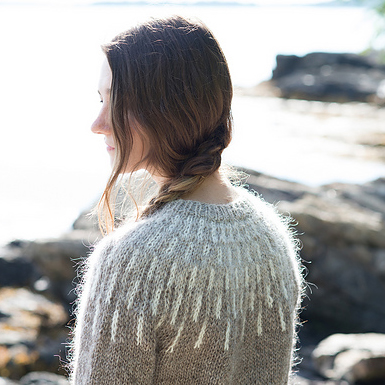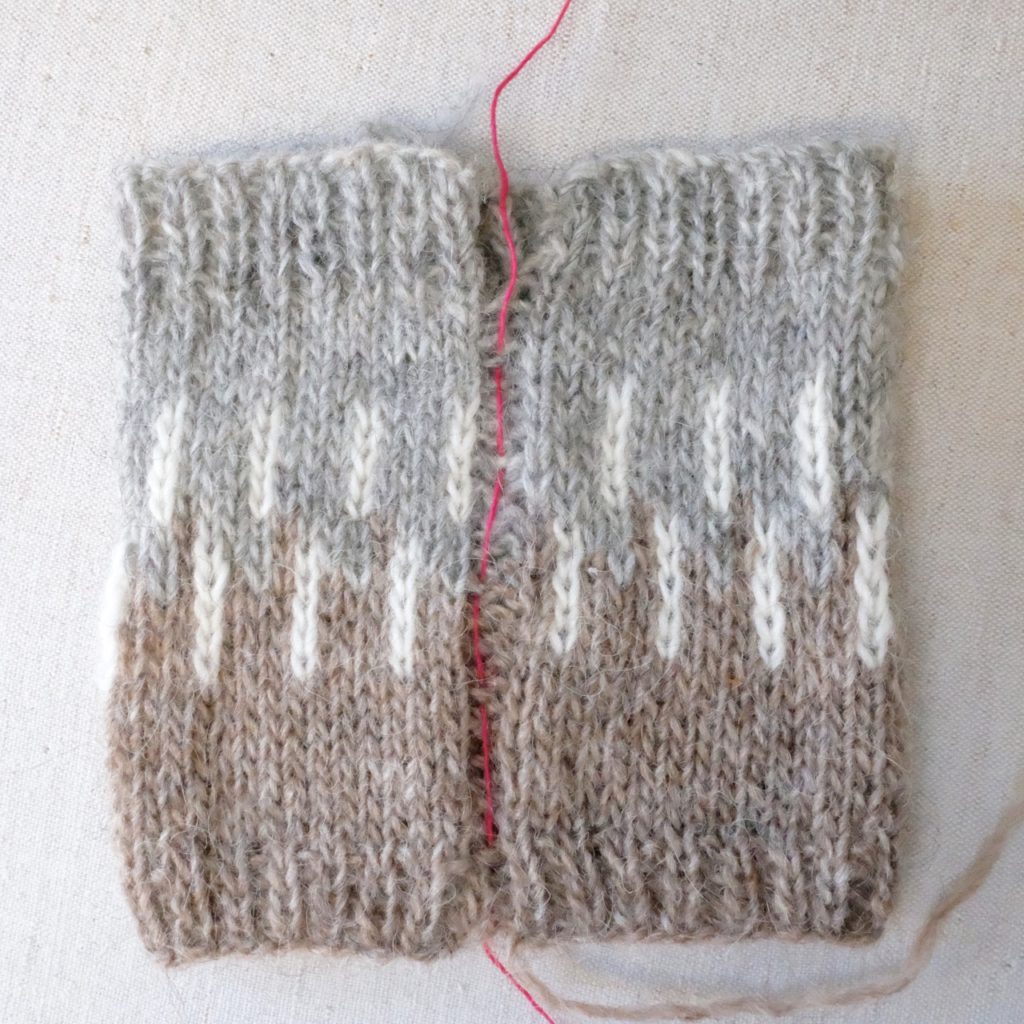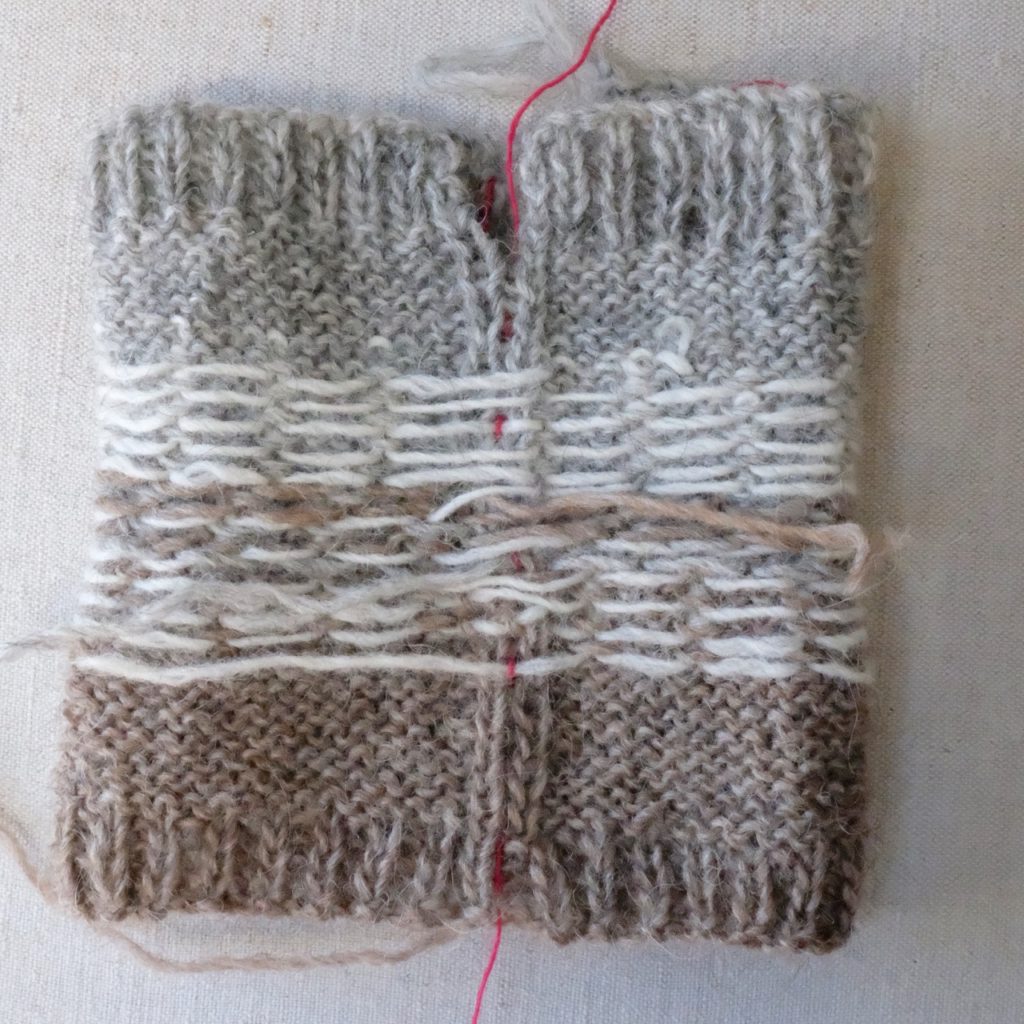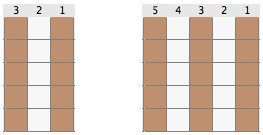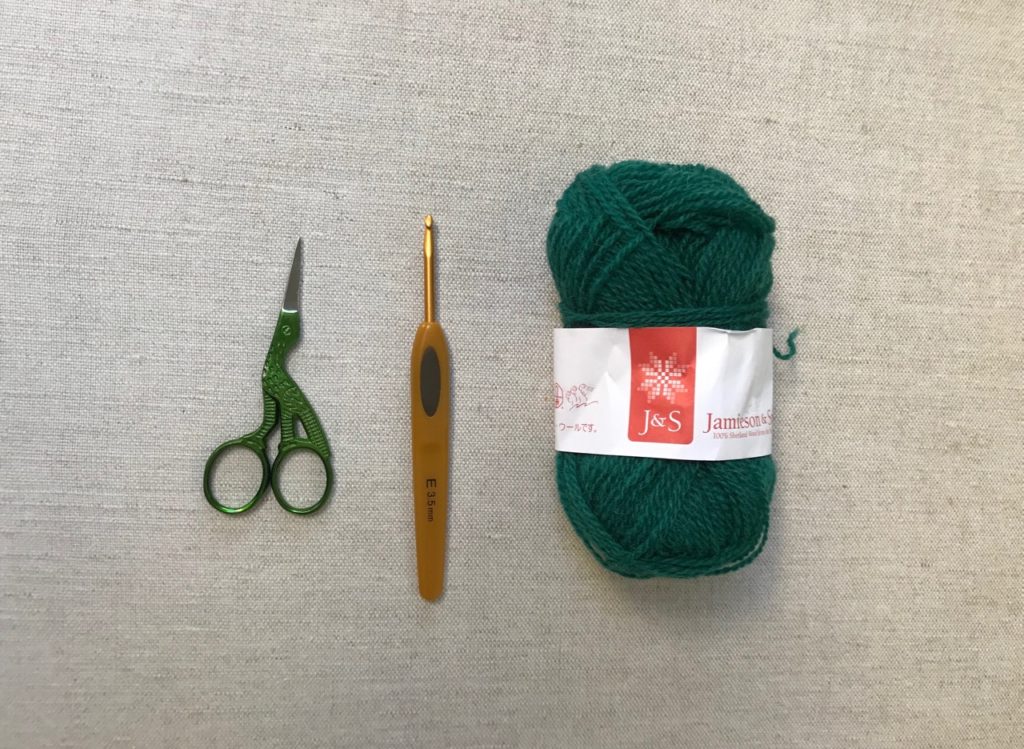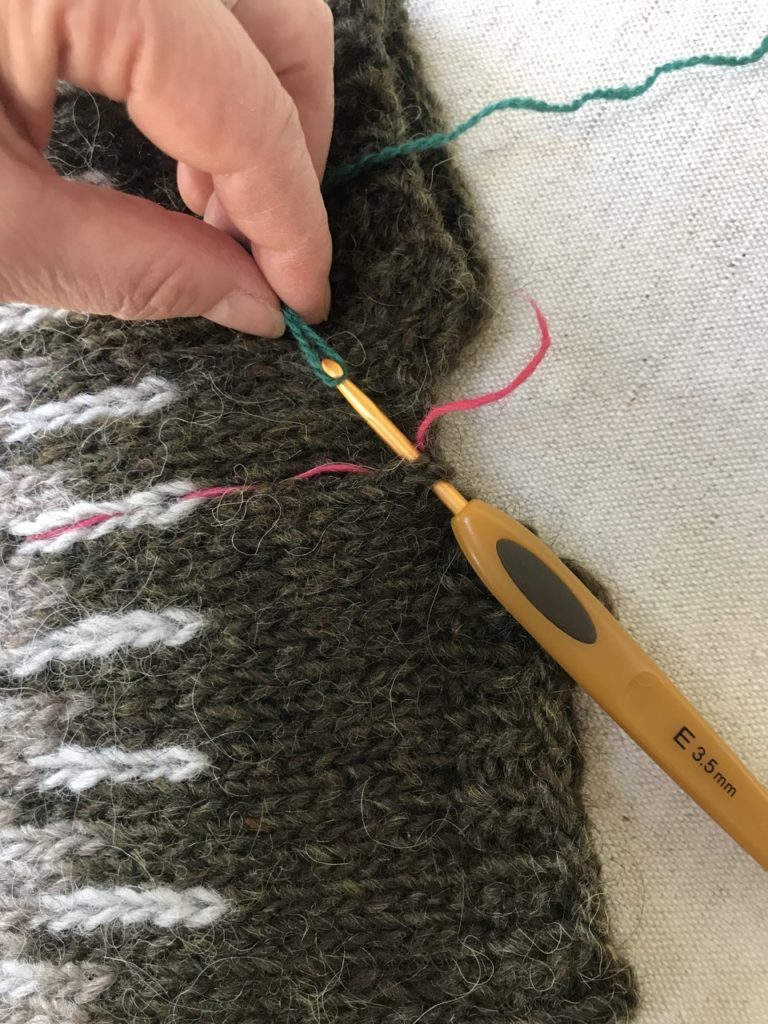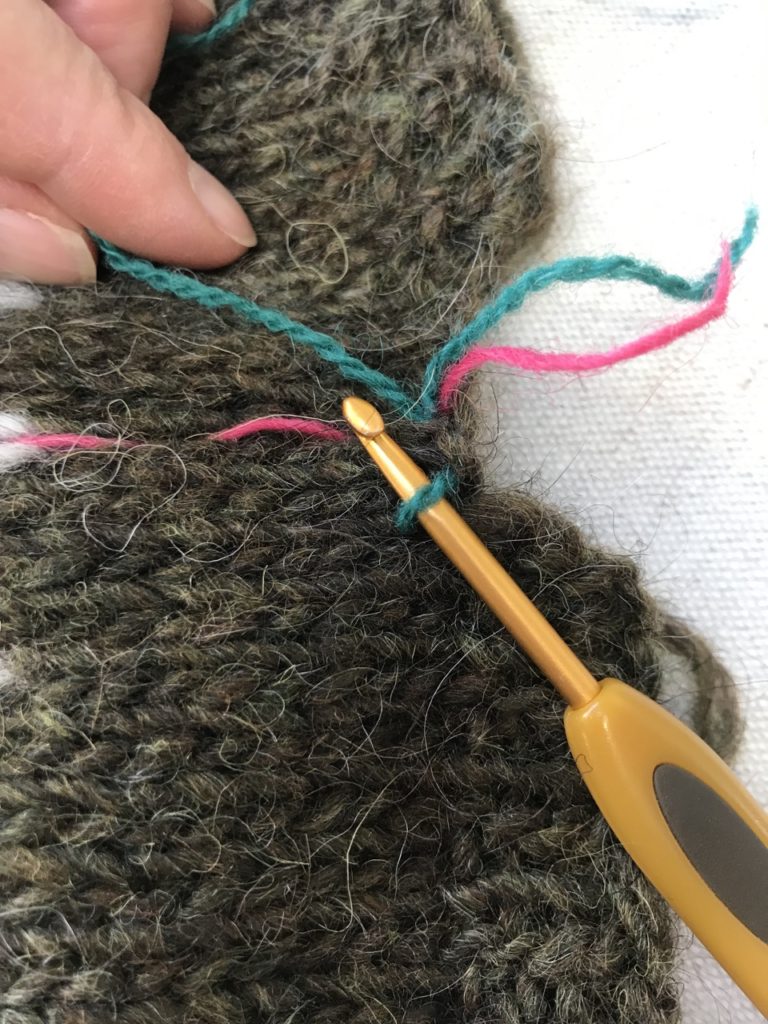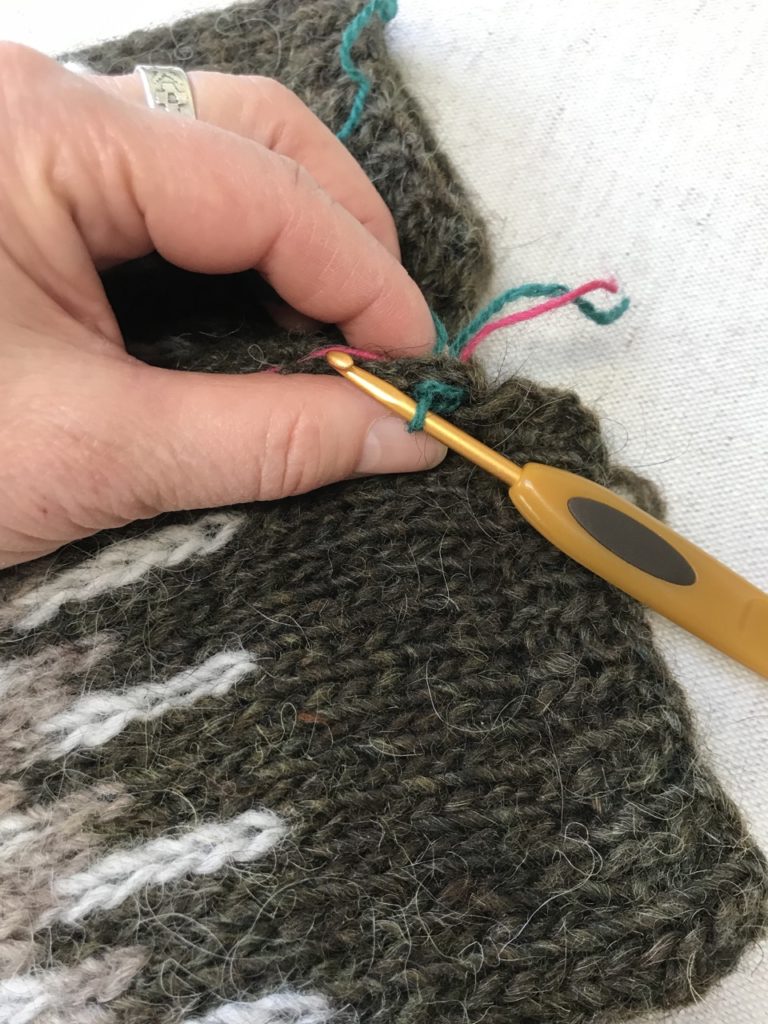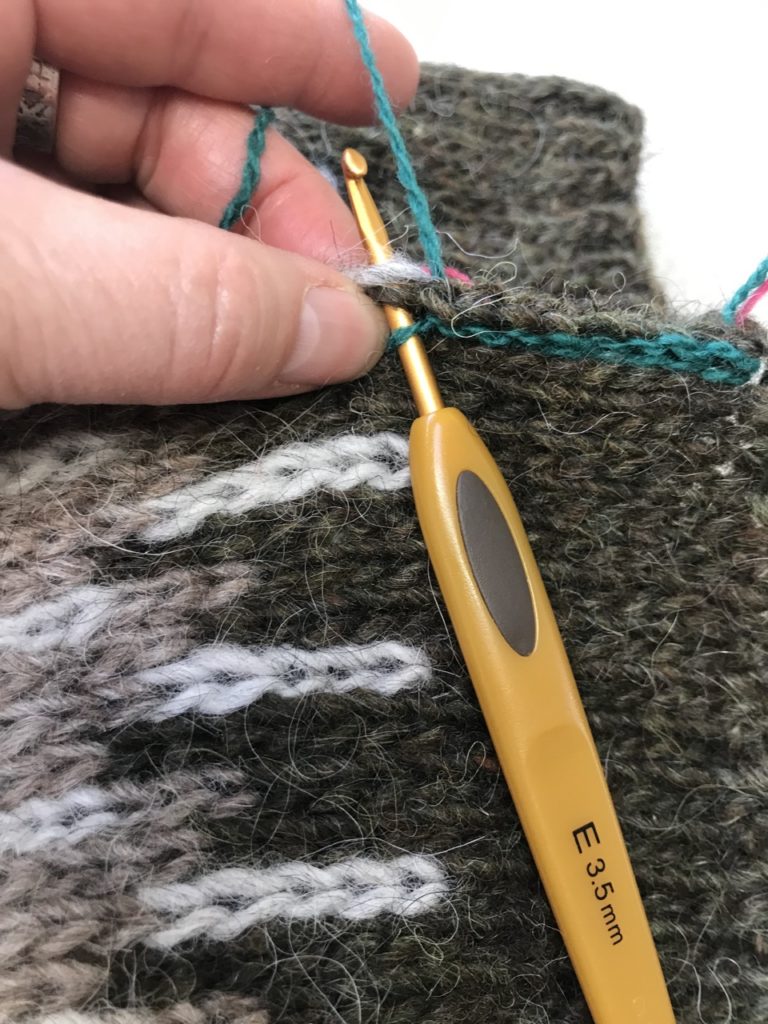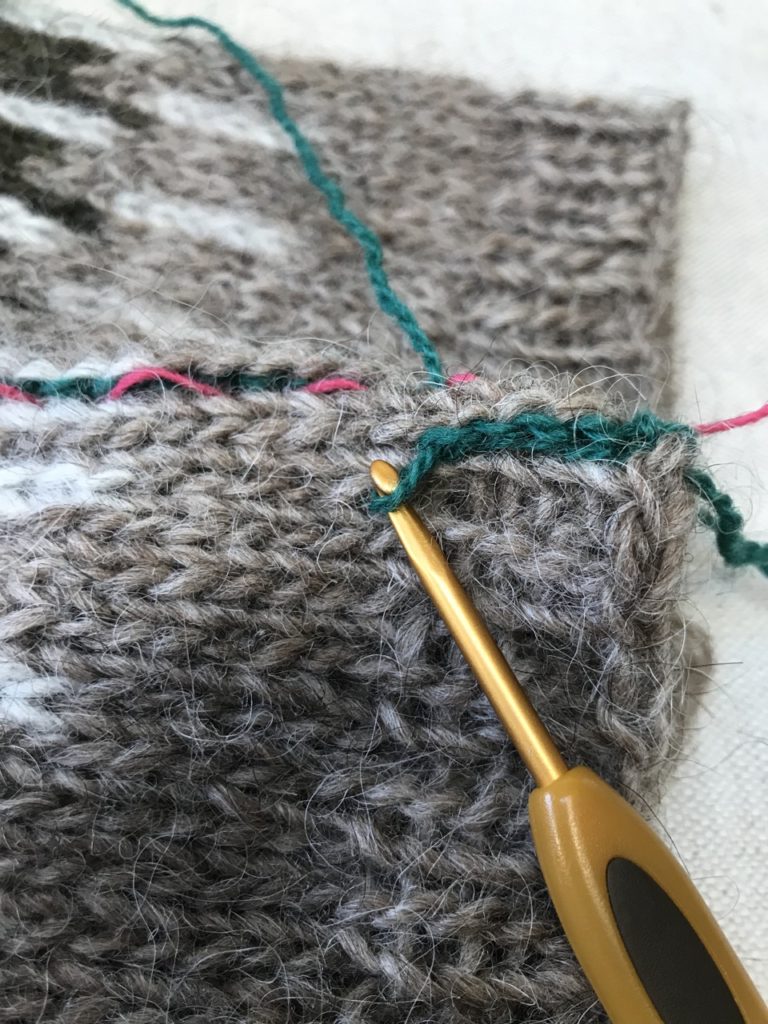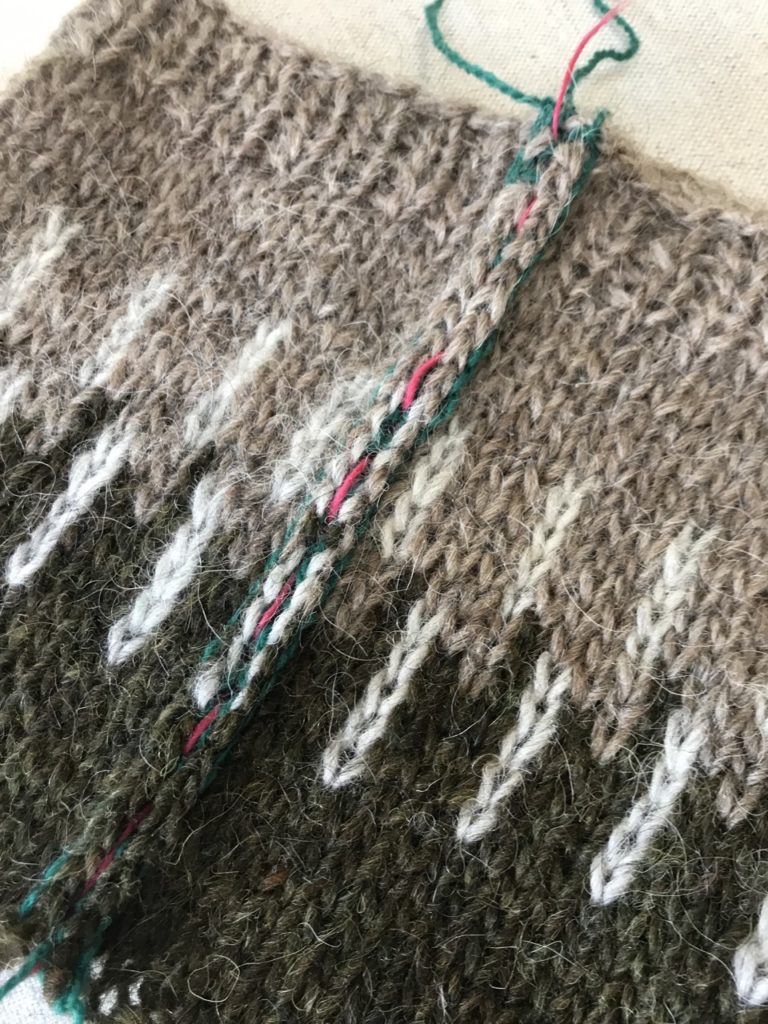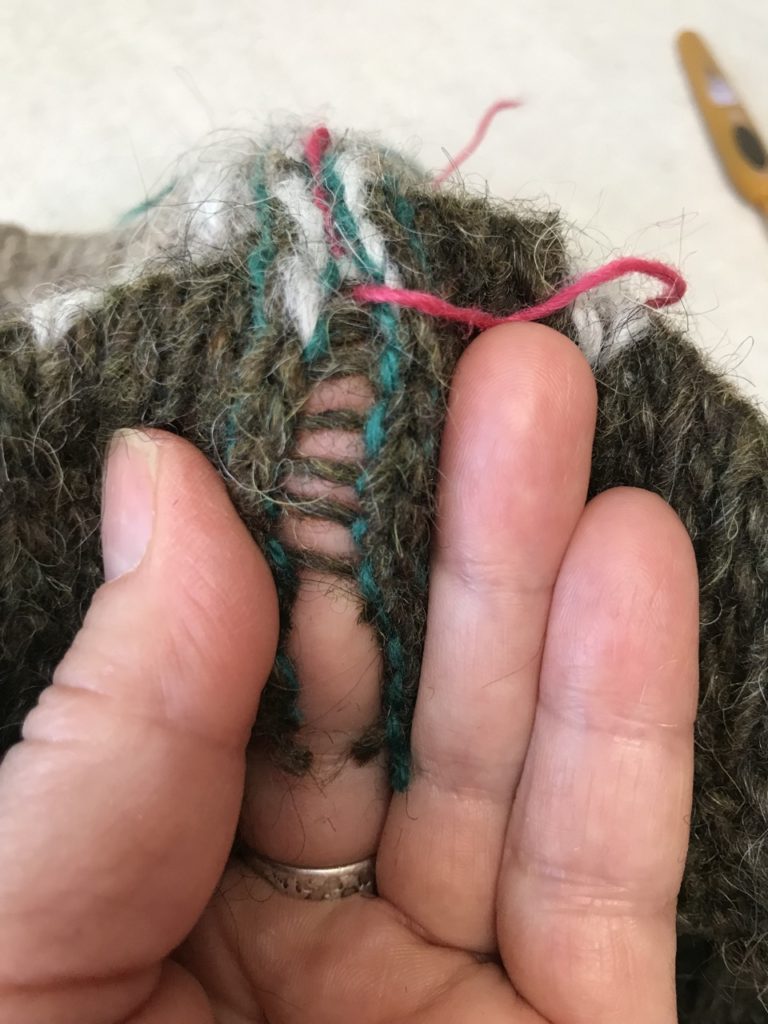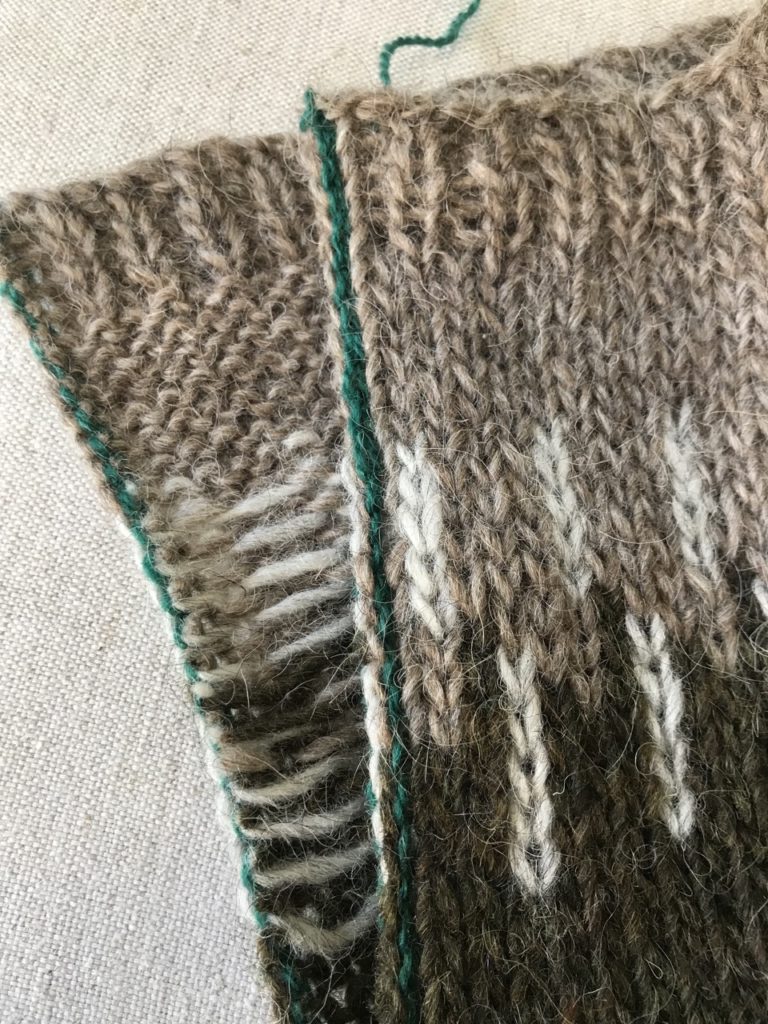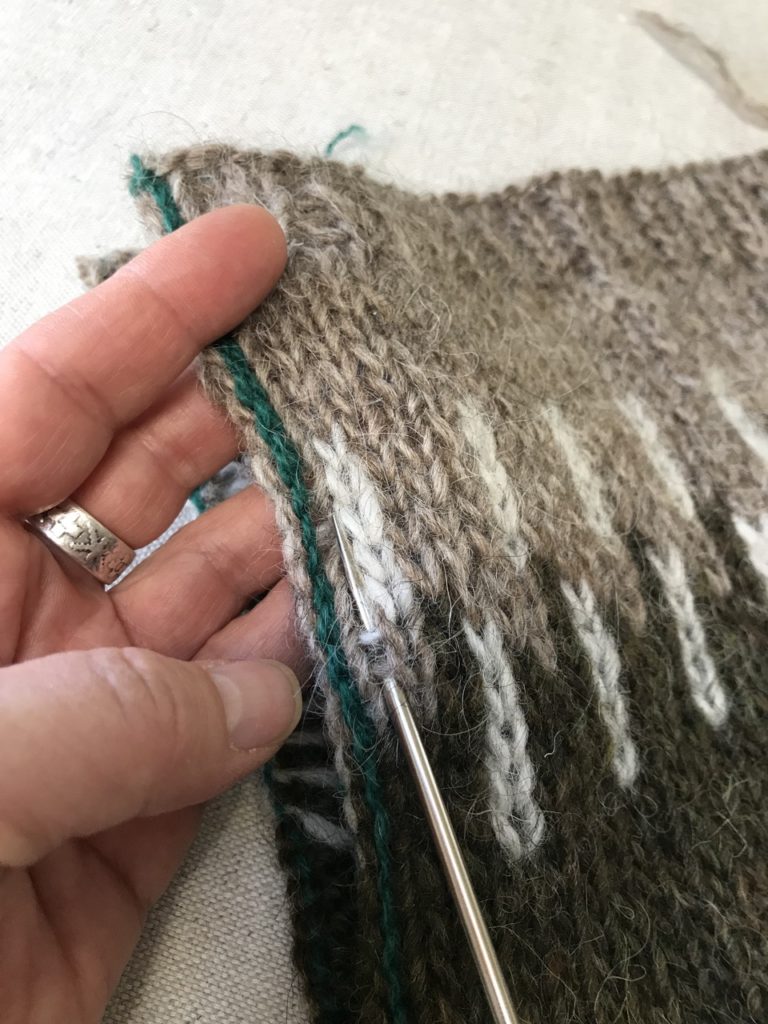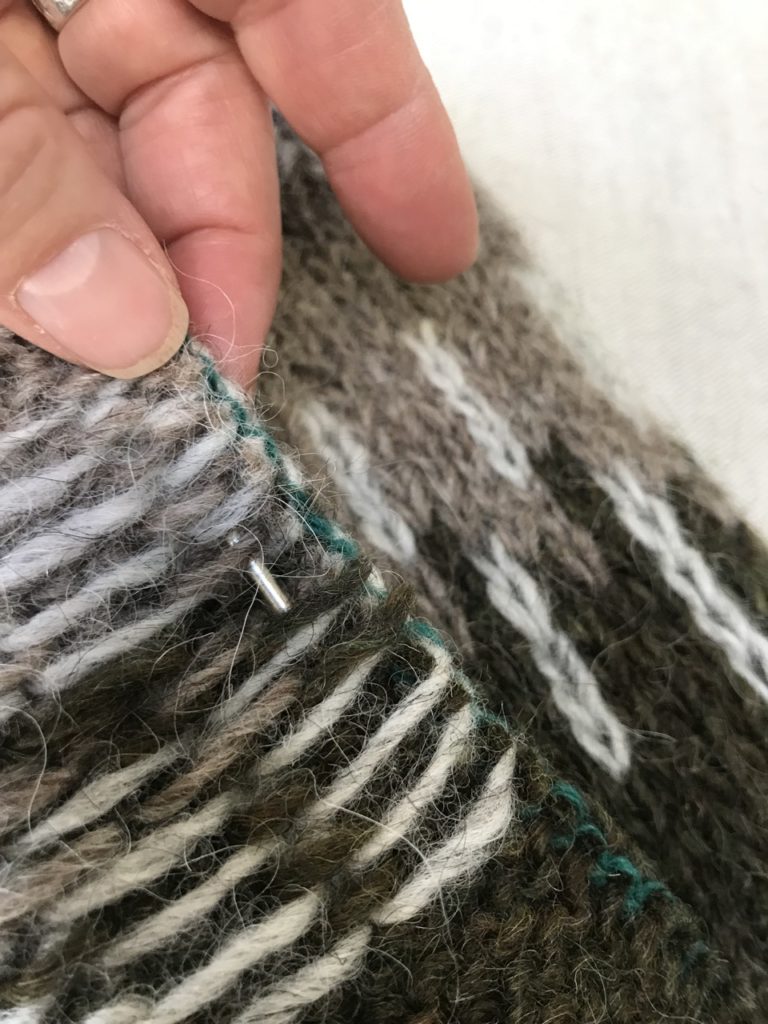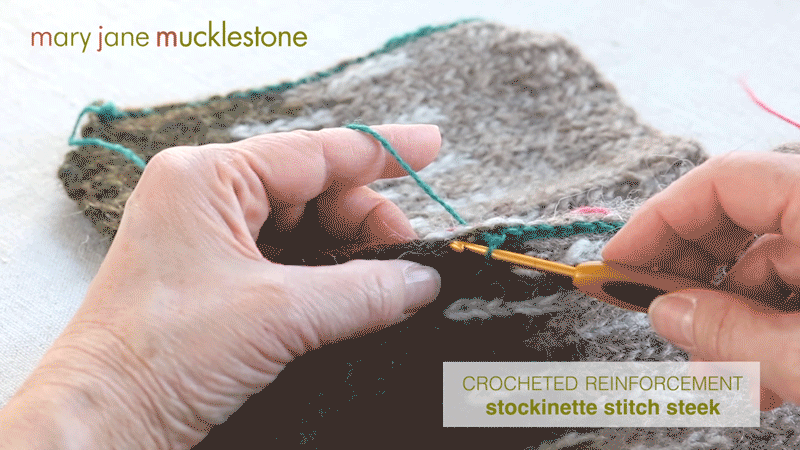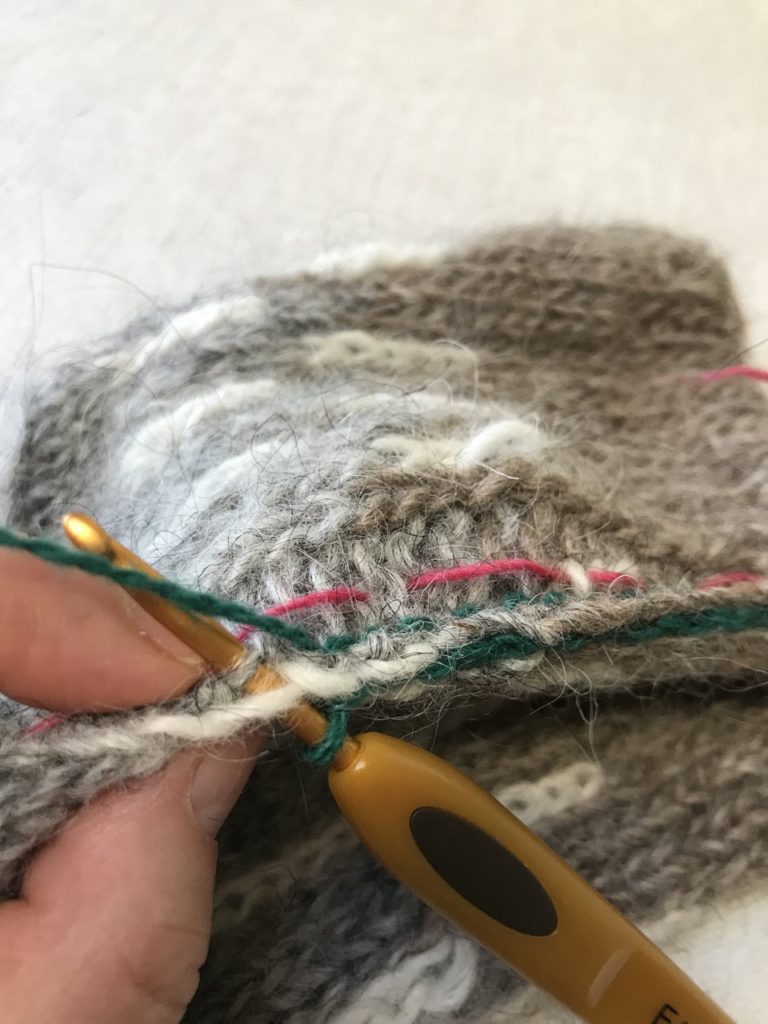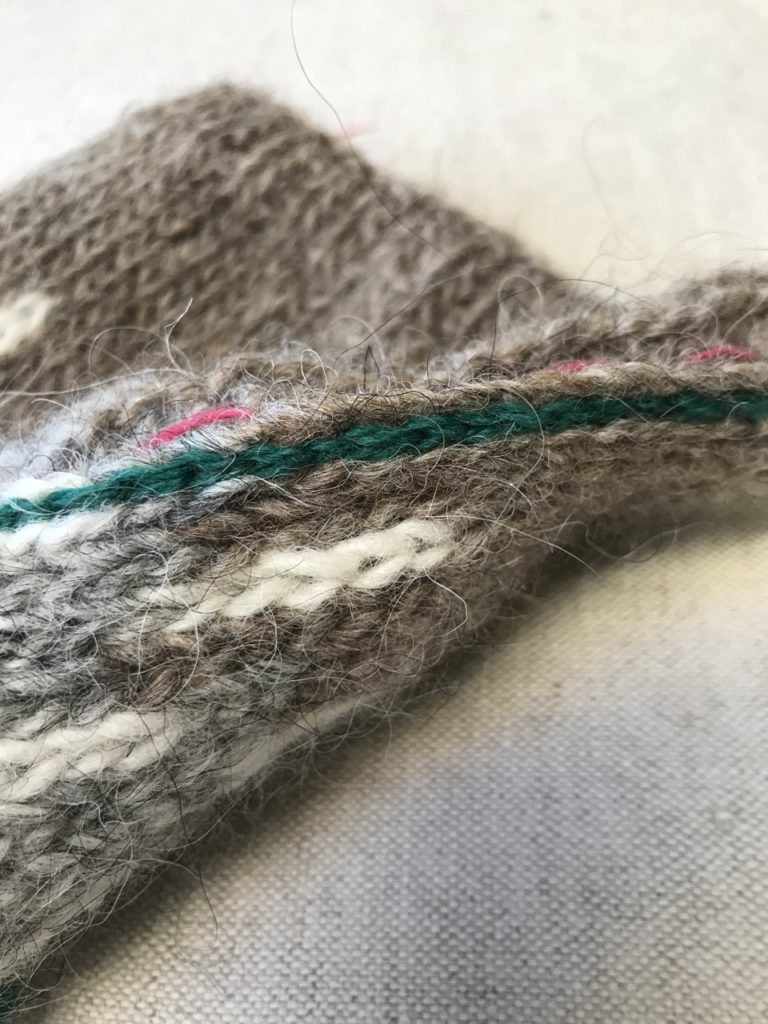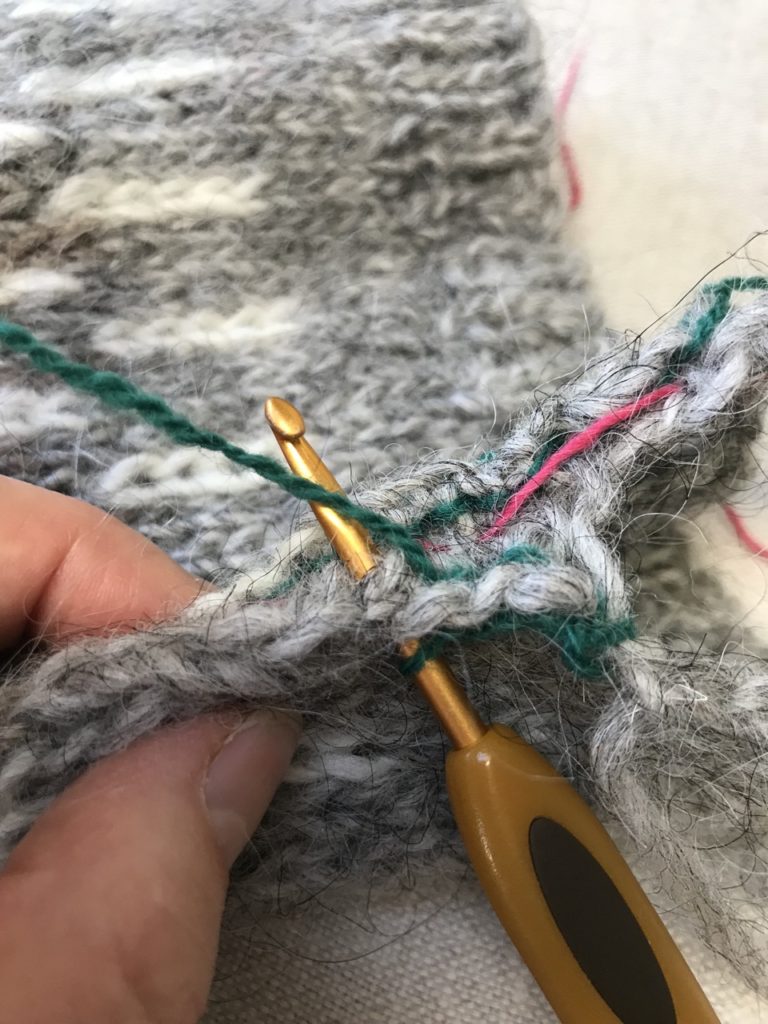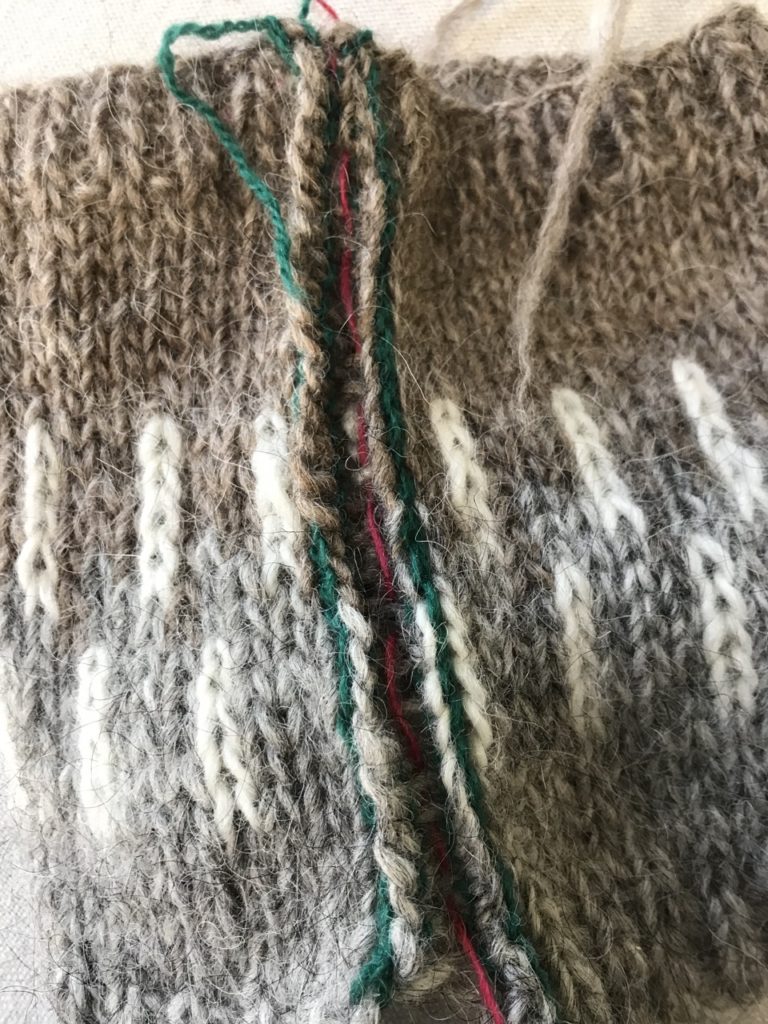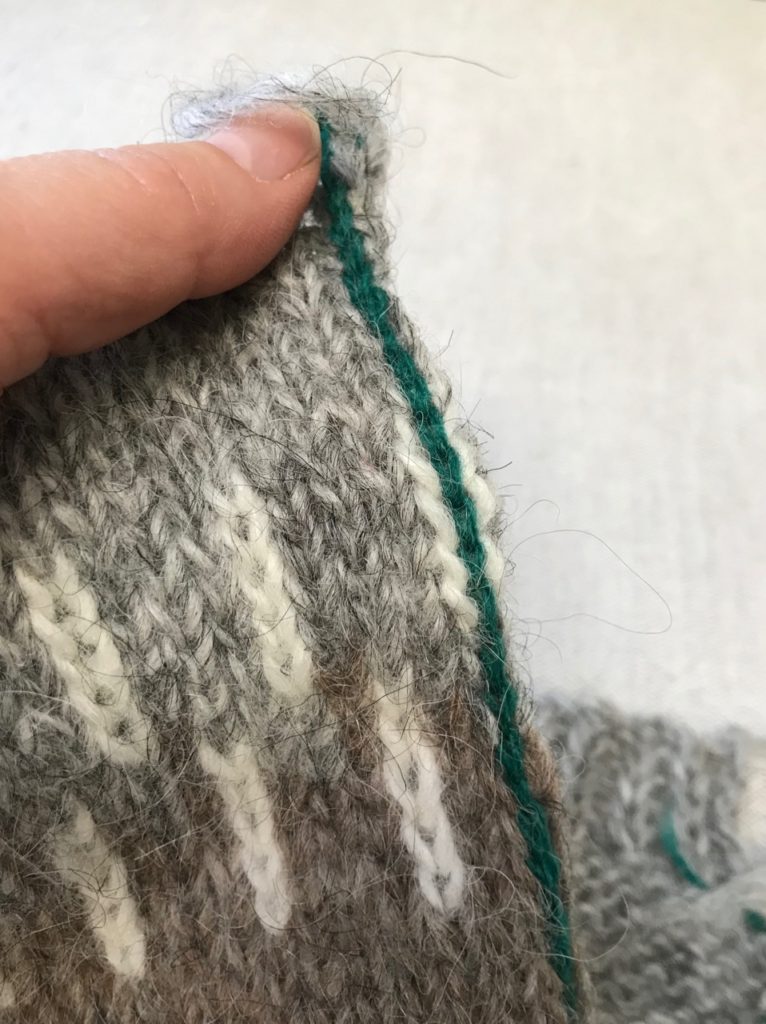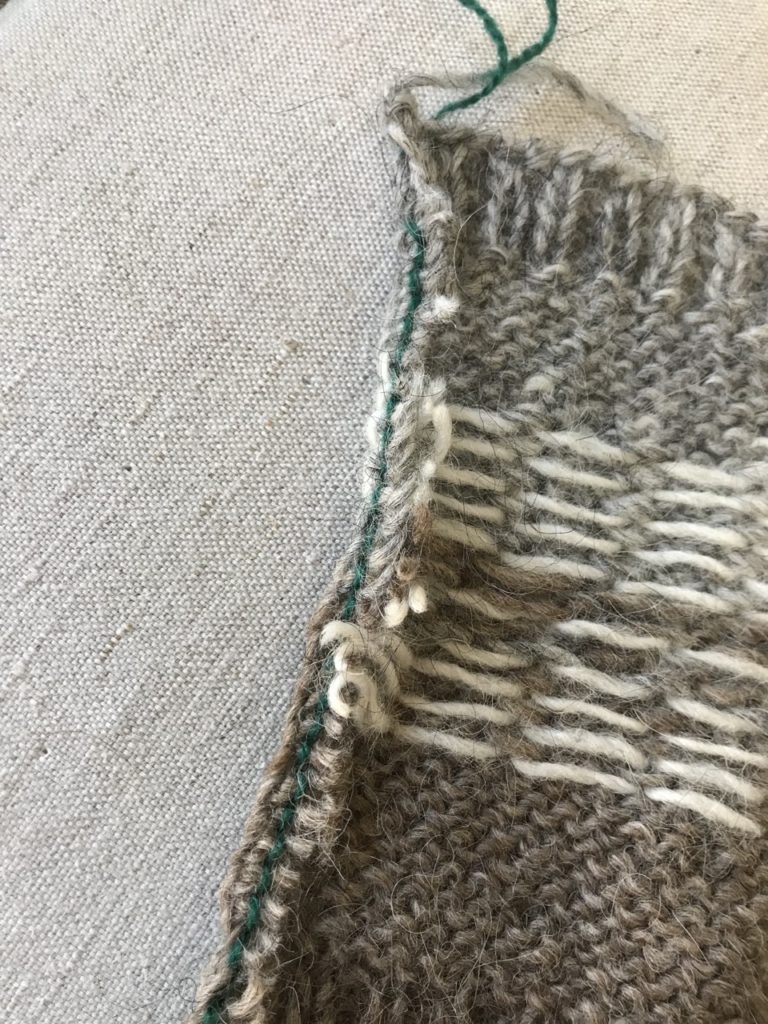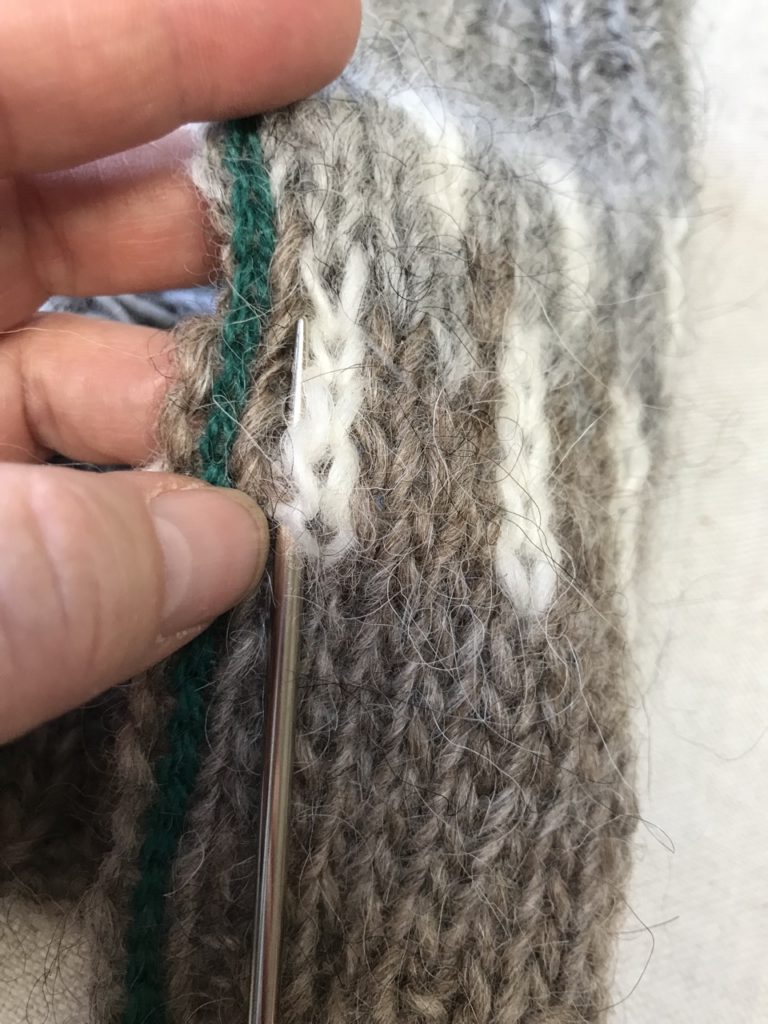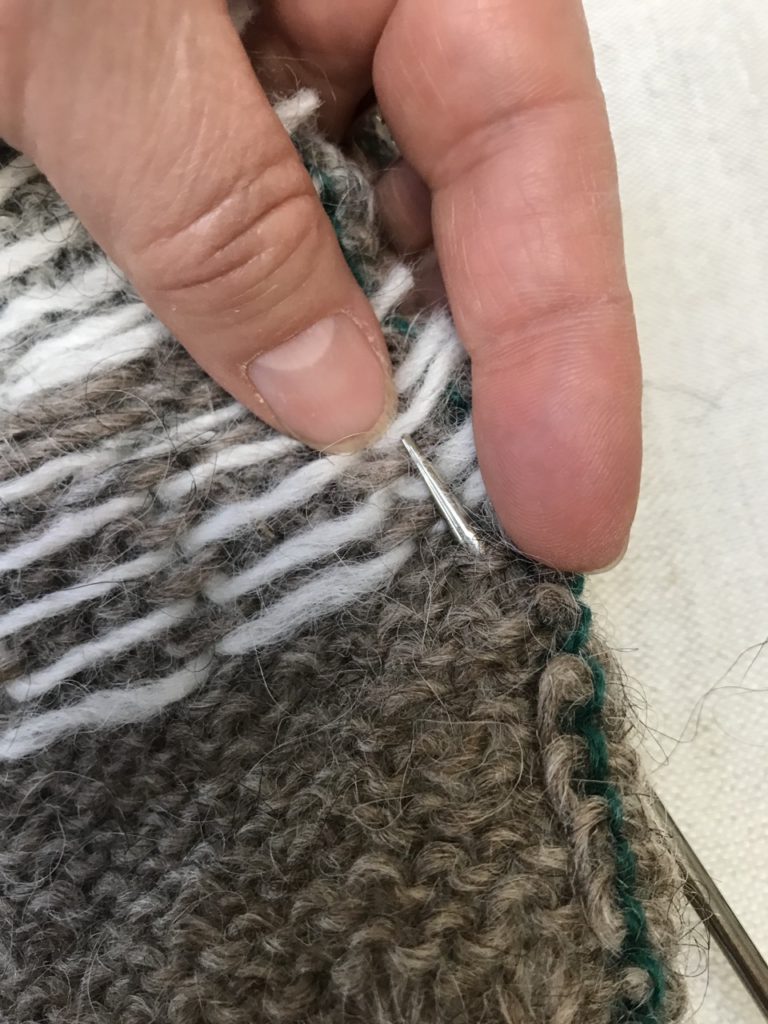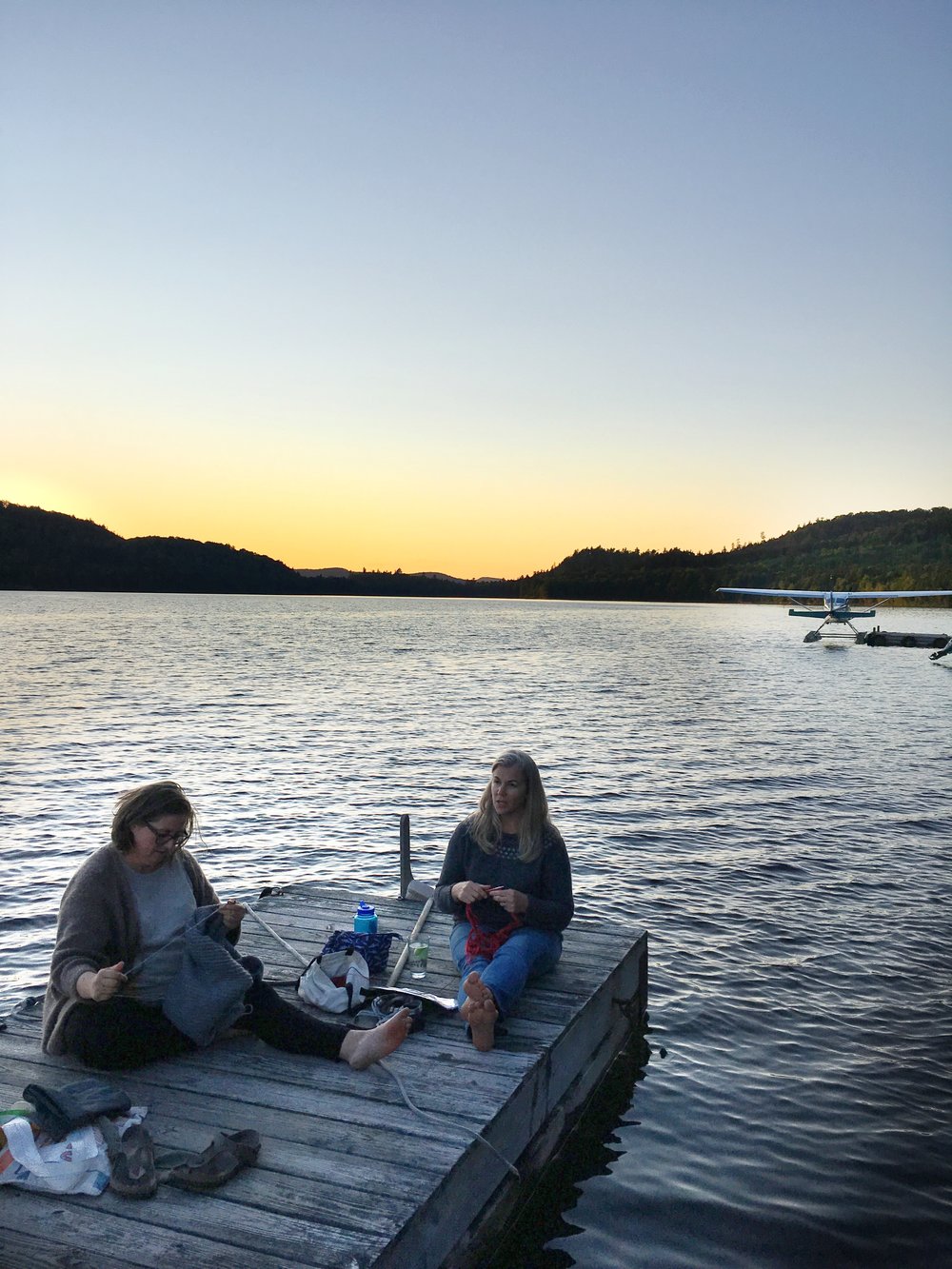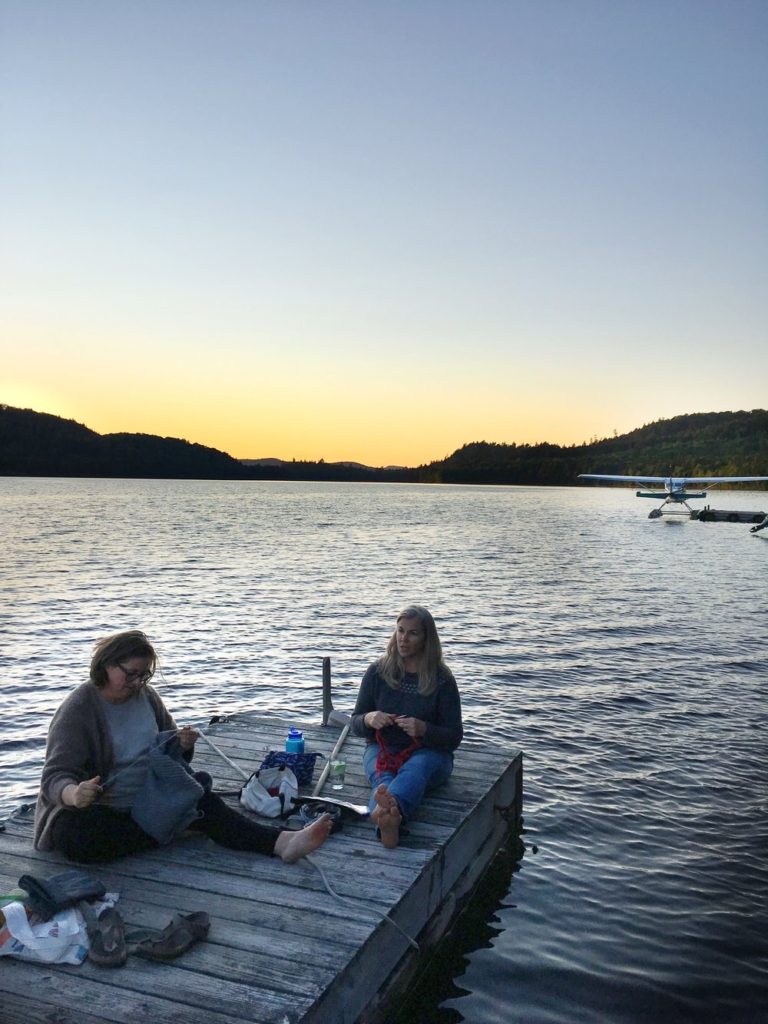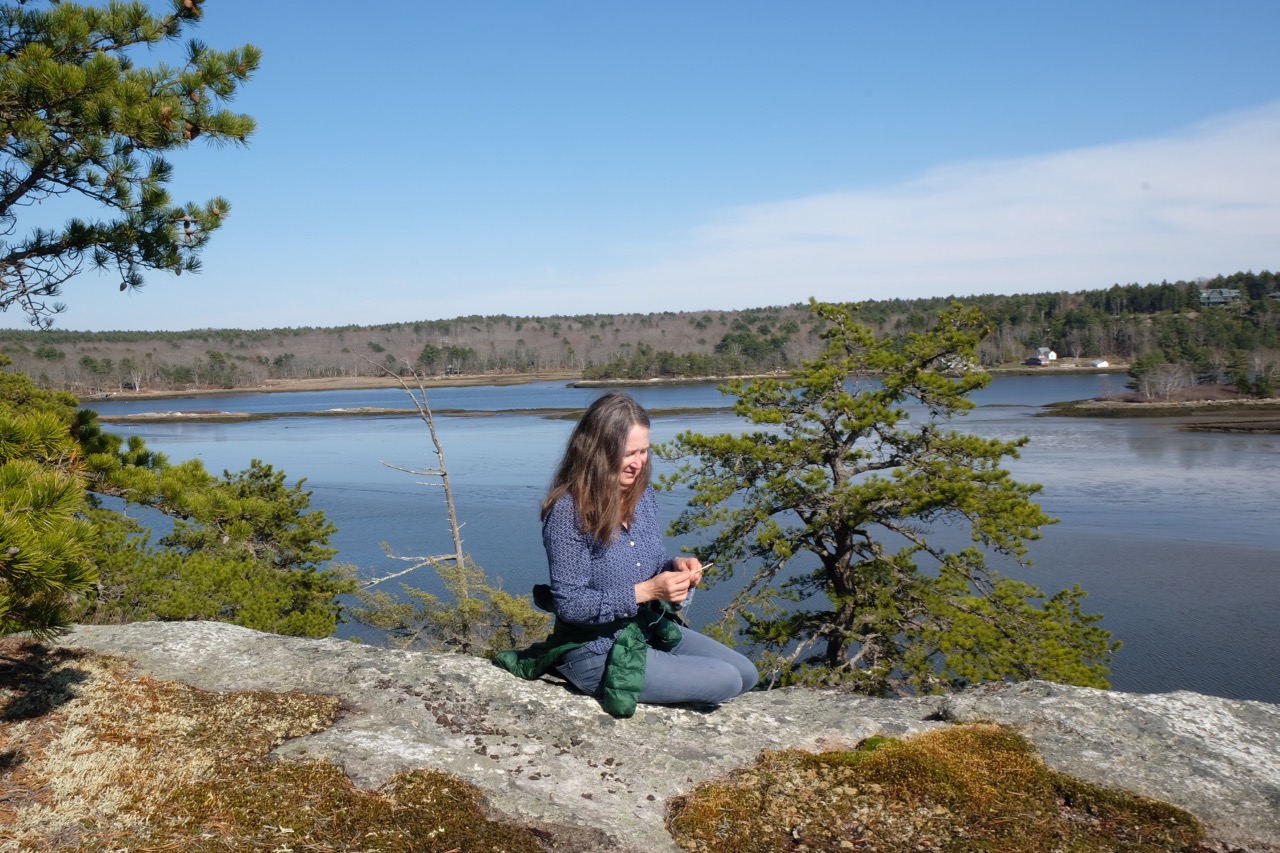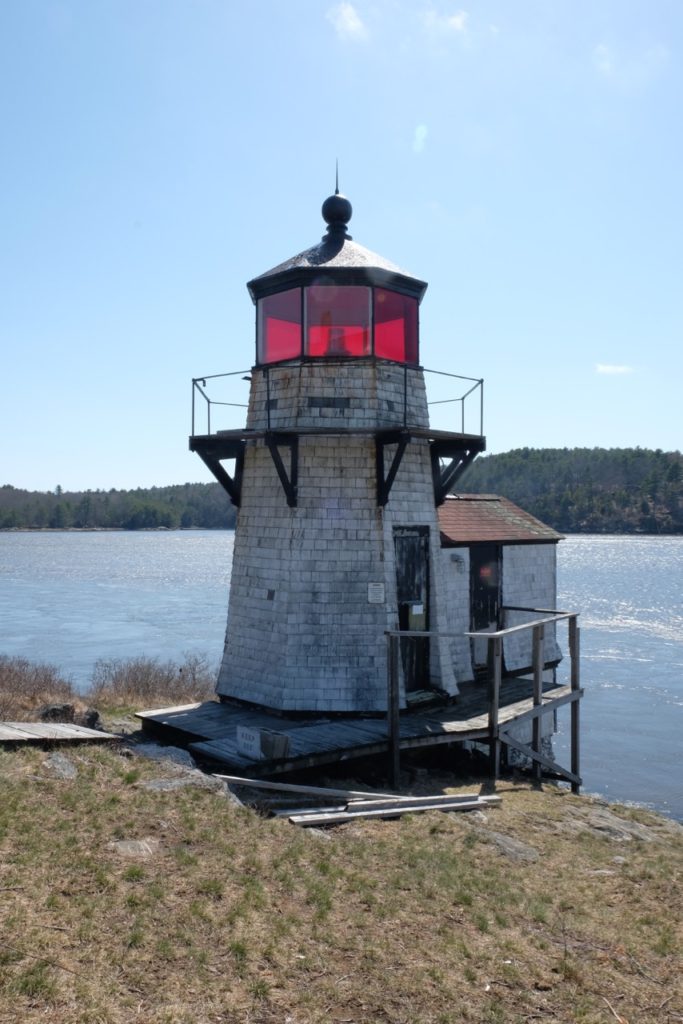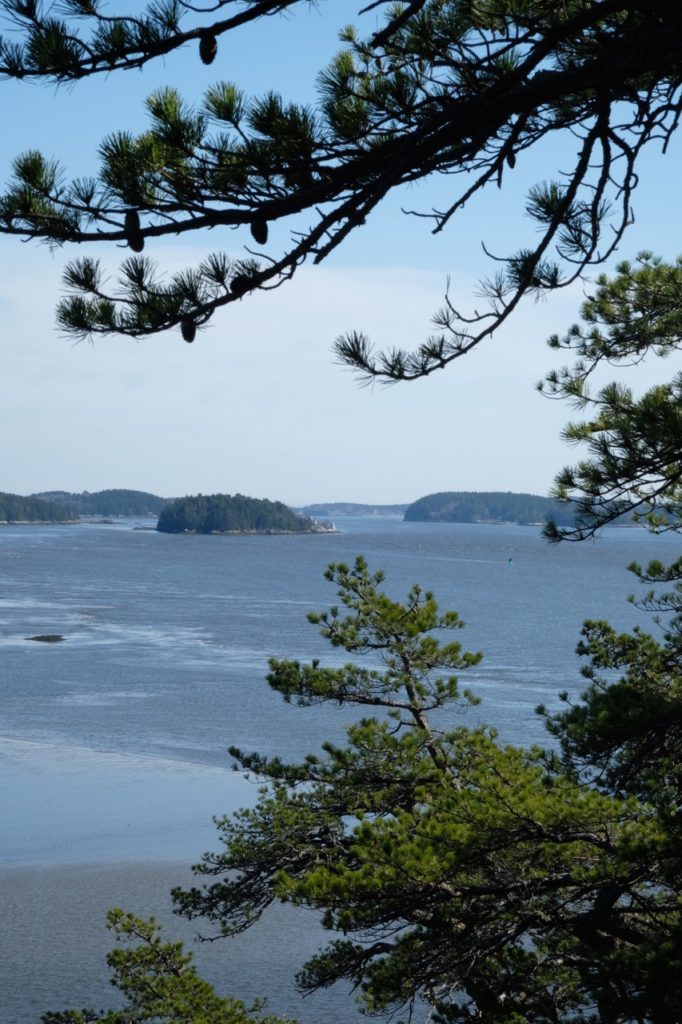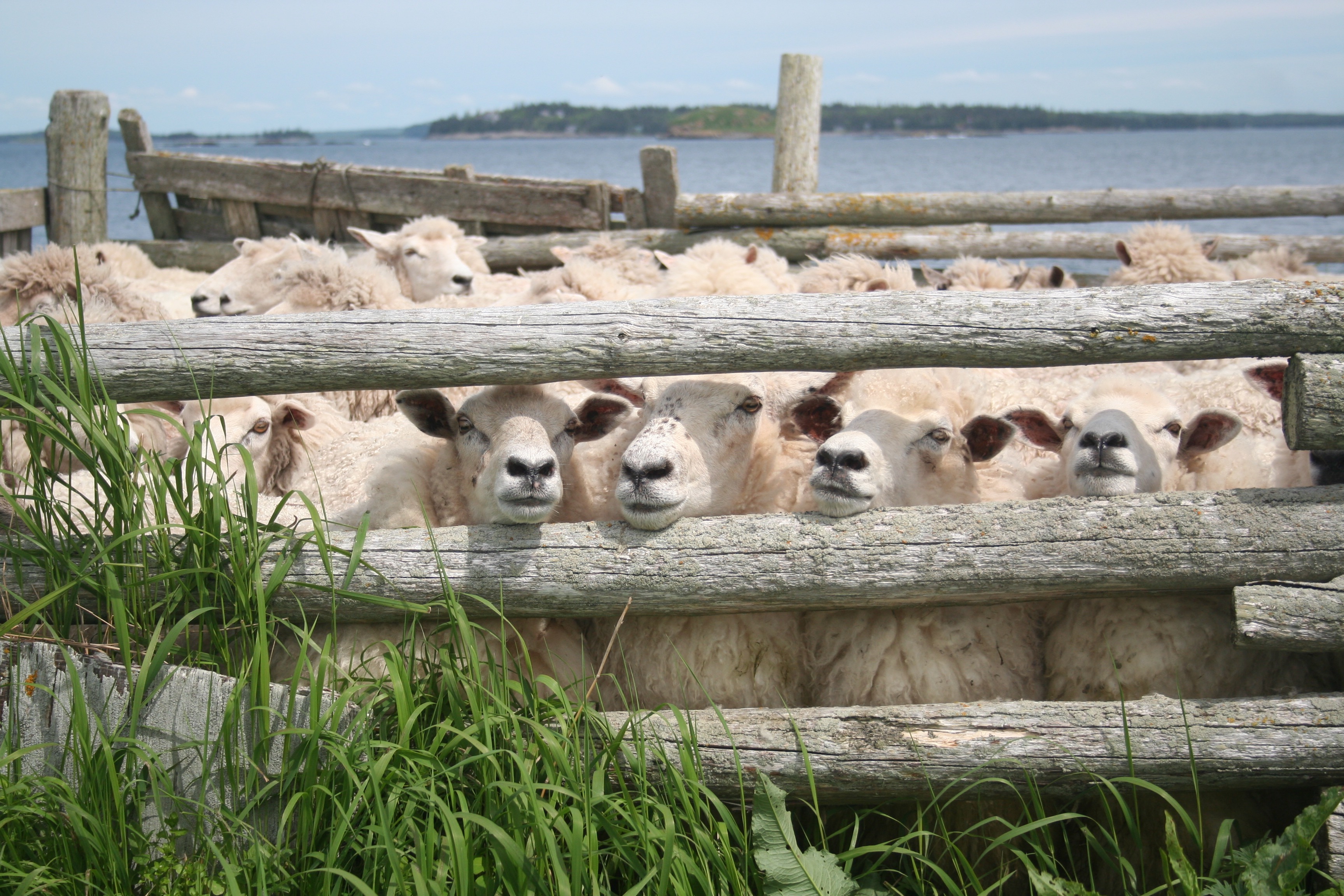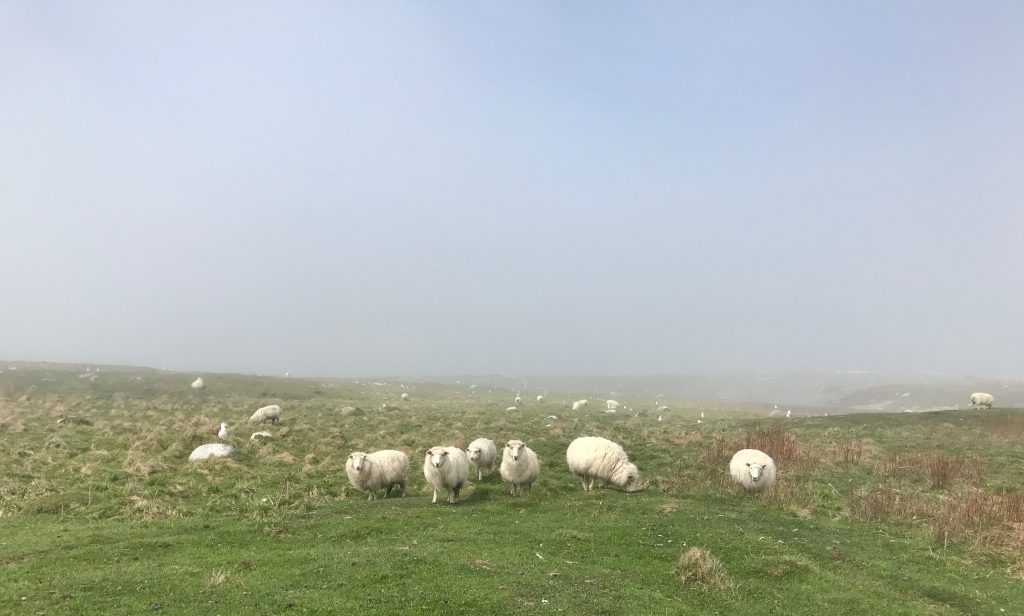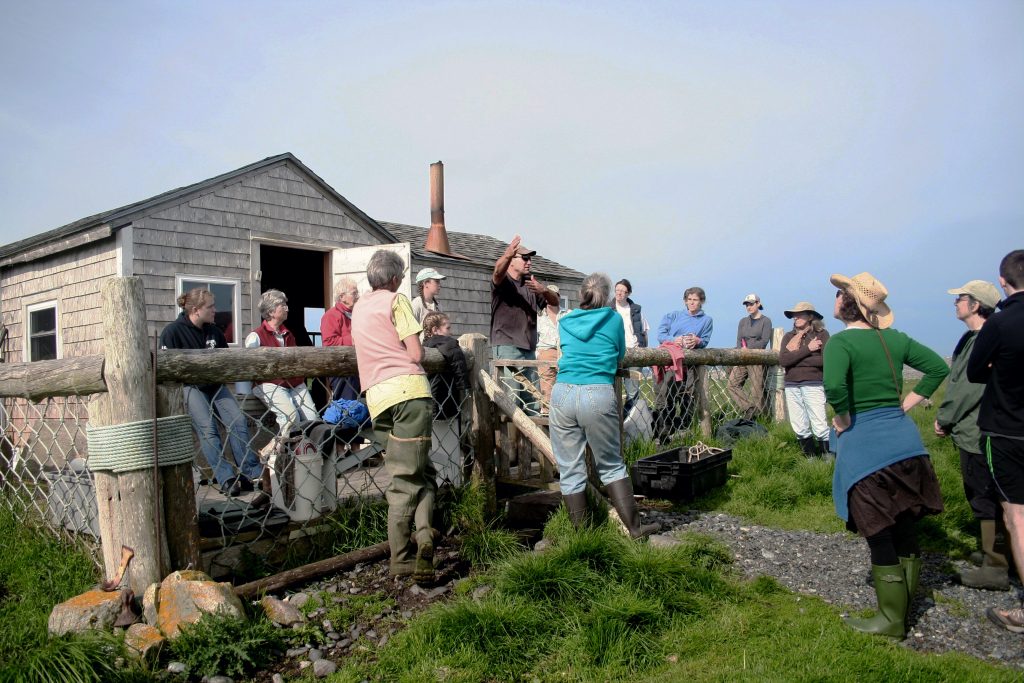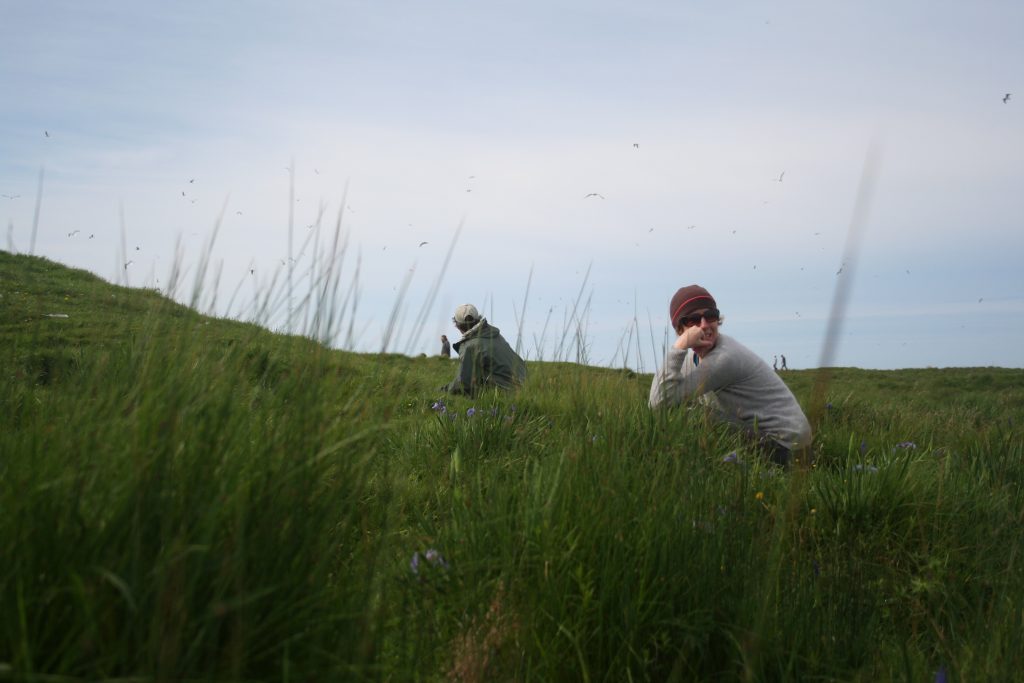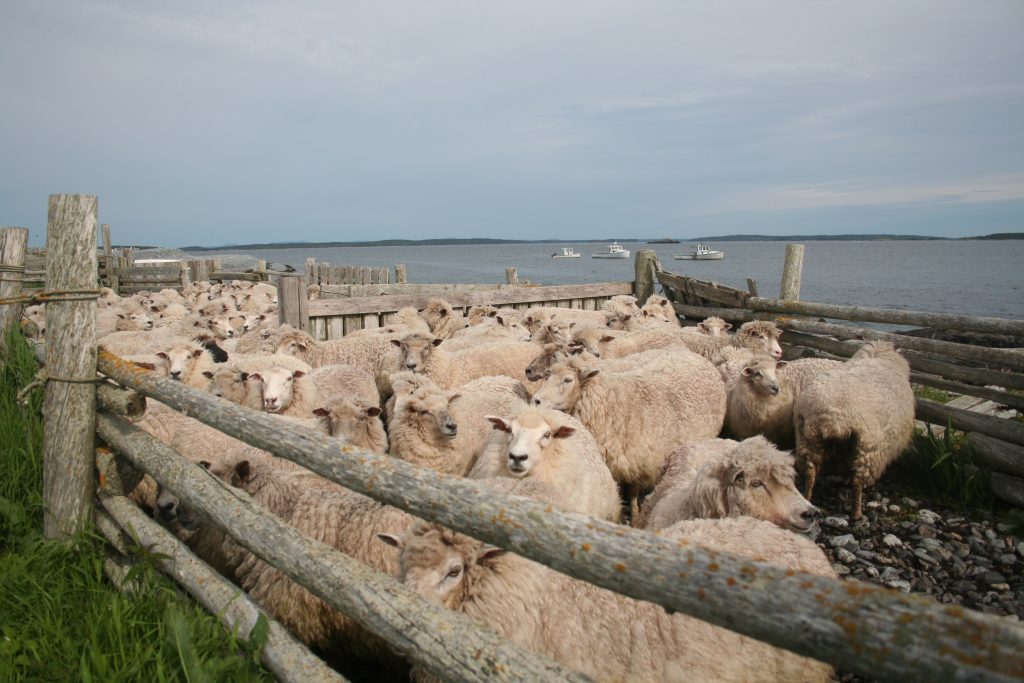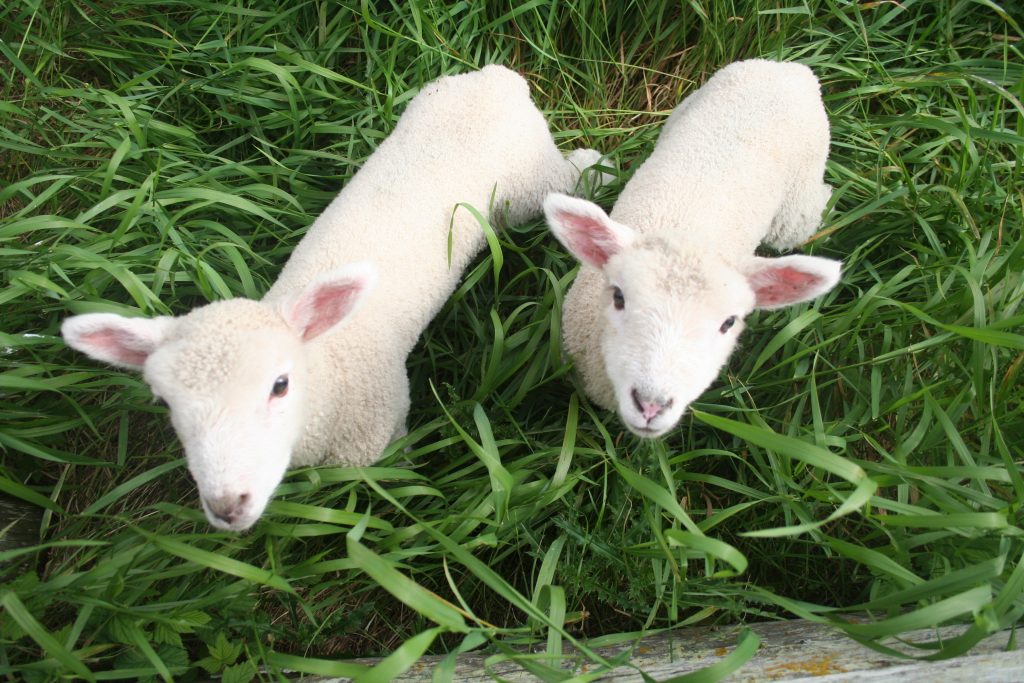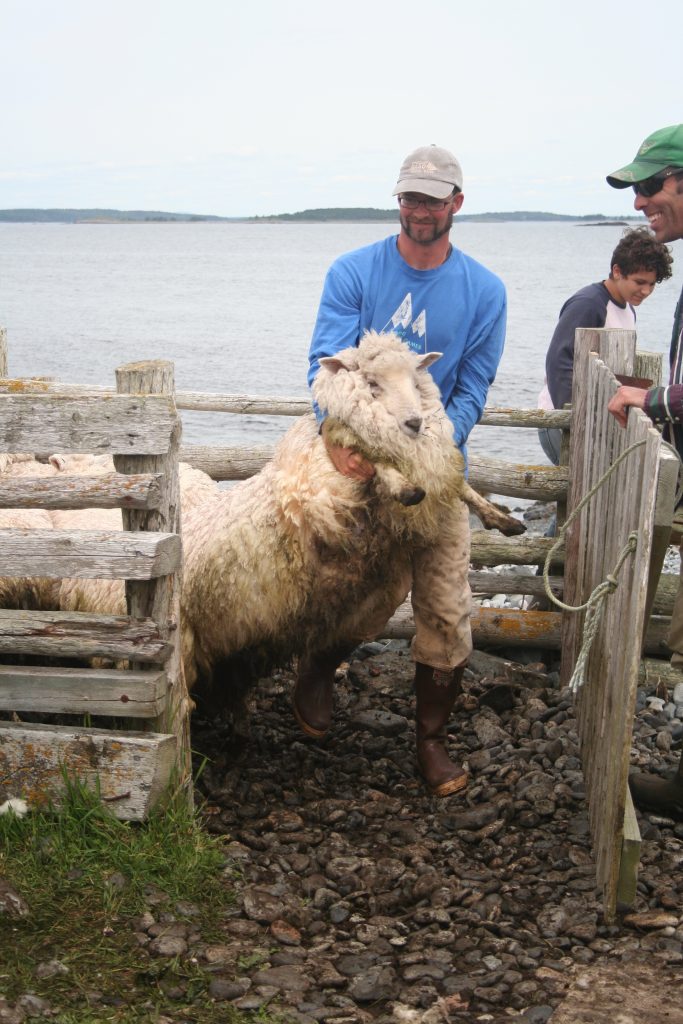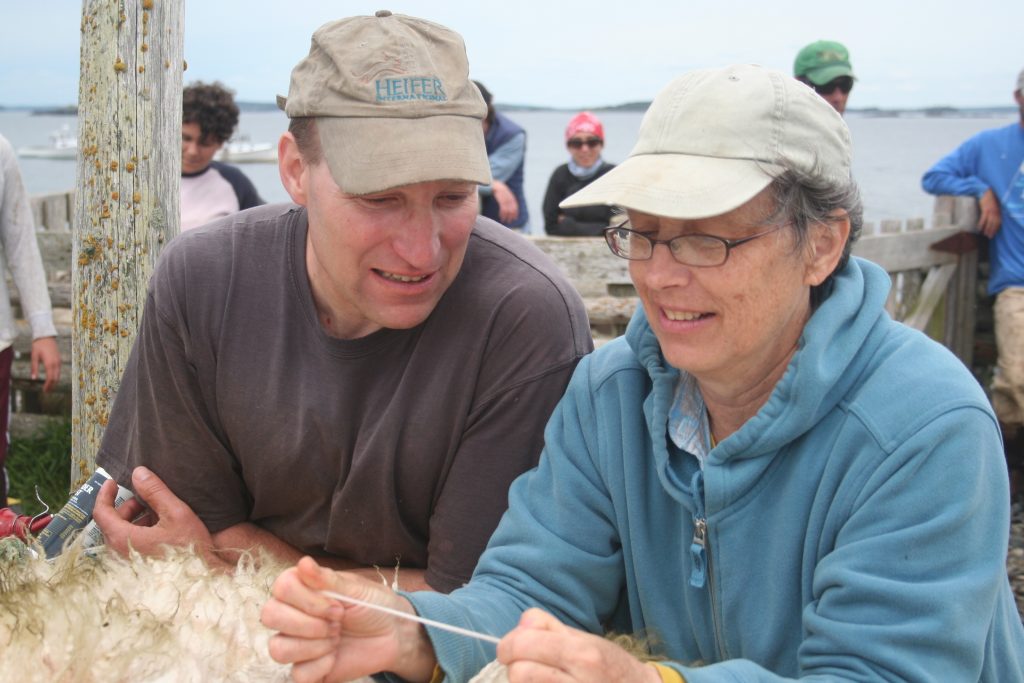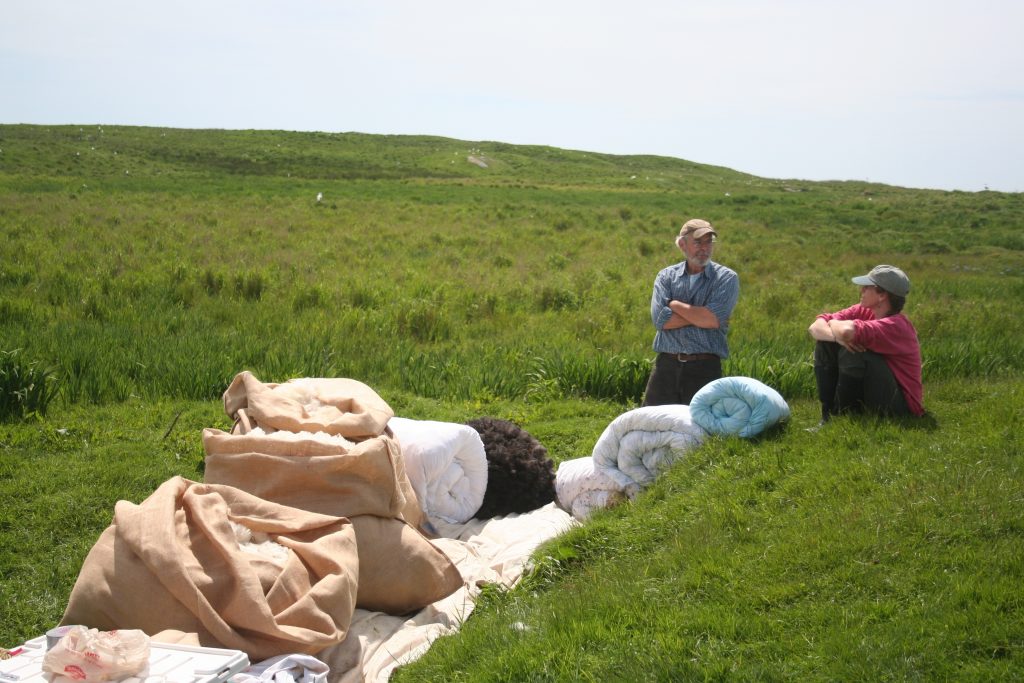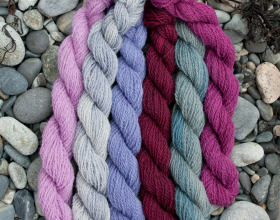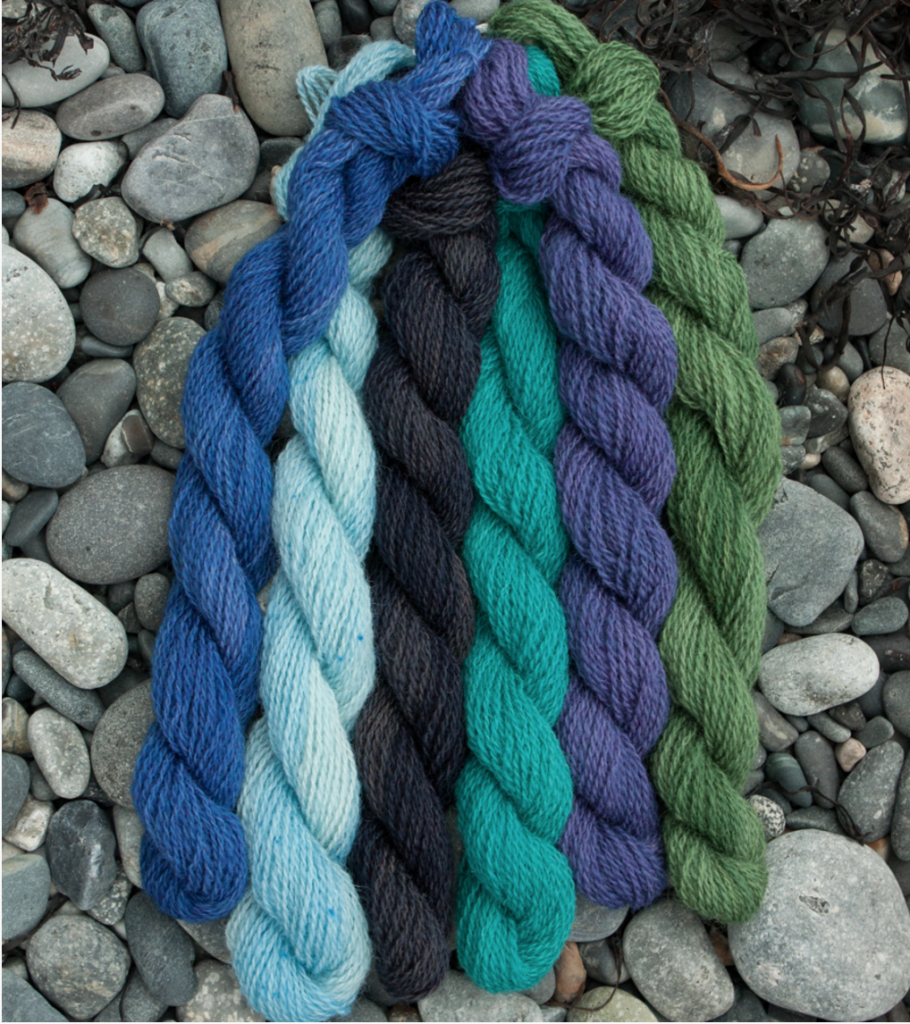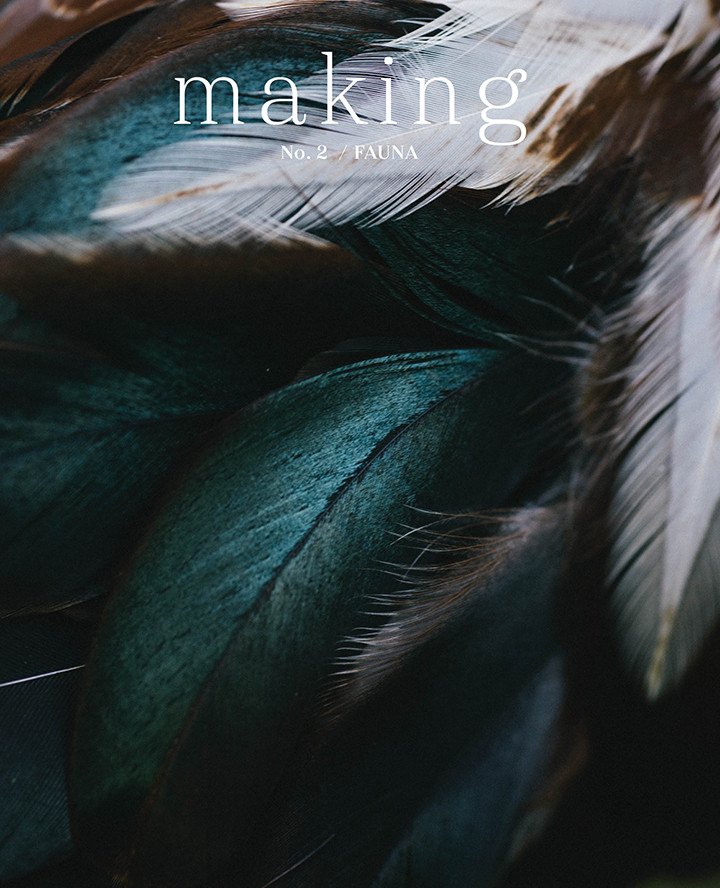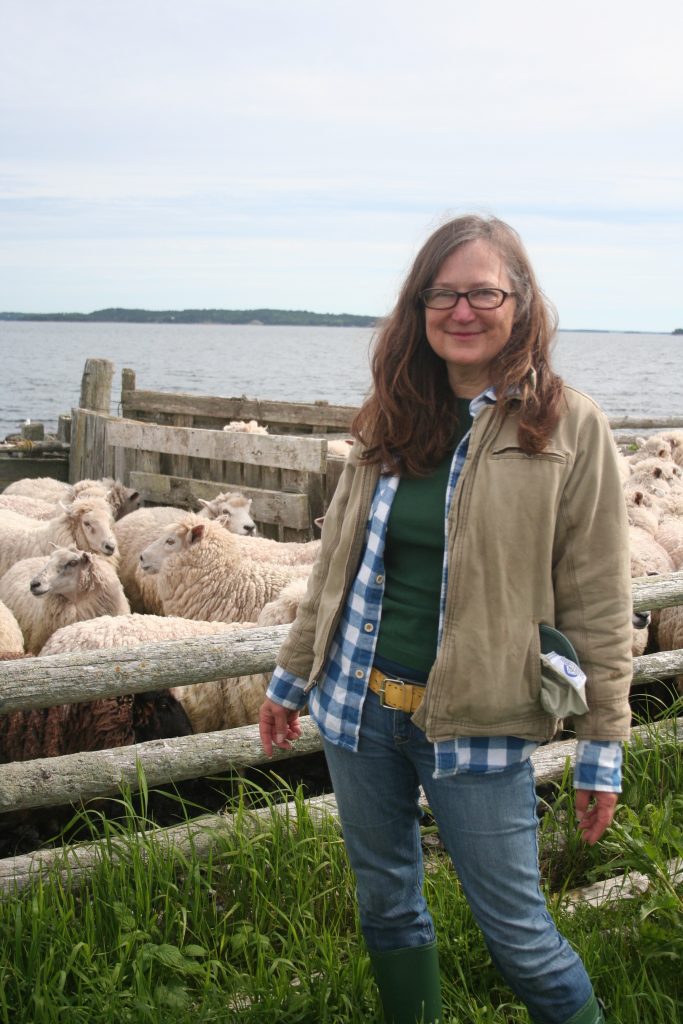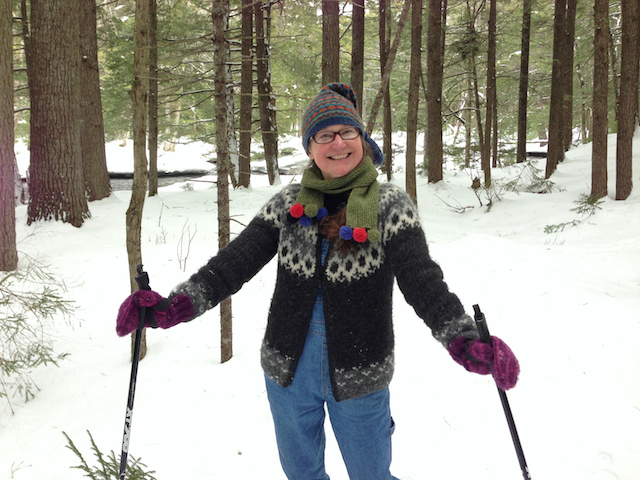
I love a cowl. Cozy and warm! And they won’t blow off or strangle you in the wind, but rather stay put and do their job.
Say hello to Cushing Cowl, inspired by the diagonal knitting of Maine fiber artist Katharine Cobey. I was scheduled to teach my Contemporary Stranded Knitting class at the Farnsworth Museum in Rockland Maine, who are having an exhibit of Katharine’s work. Wanting to add a little of her influence, I got to wondering how to apply her ideas about diagonals to stranded colorwork. I went a bit wild in the process, making zigzags, arrows, chevrons and diamonds that all stemmed from one little pattern repeat.
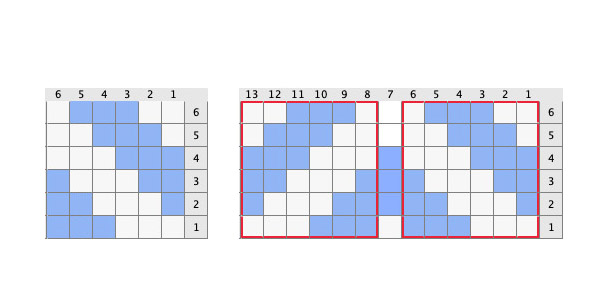
I began by playing around with diagonal lines, and settled on a 6 stitch x 6 row, diagonal pattern – 3 stitches of each color marching to the left. I flipped the motif horizontally to see what would happen. I discovered that if I added another column of stitches, I could make an arrow shape (above right) I’ve outlined the original 6×6 pattern in red so you can see. Next I flipped that whole new bit down, and added a row to make a diamond shape! That’s how it starts. The possibilities are endless!
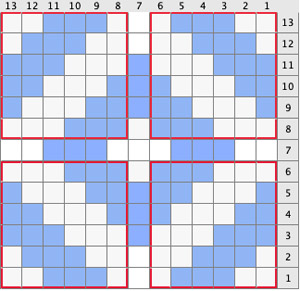
I wanted a graphic look for my cowl, so I dove into my stash and came out with two skeins of local Maine based, Quince & Co. Lark, worsted weight yarn in Pea Coat, a nice dark navy for the Main Color. I wanted to pair it with an off-white. I didn’t have a full skein of anything, but found a couple of partial white balls, Audouin, sort of an oatmeal color, and a little ball of Egret, a bright white.
Necessity is the mother of invention, I used them both! Plus, I think having the two slightly different whites are what really make these solid colors work so nicely. The effect is very subtle, but so much more lively than if I had just used one contrast color.
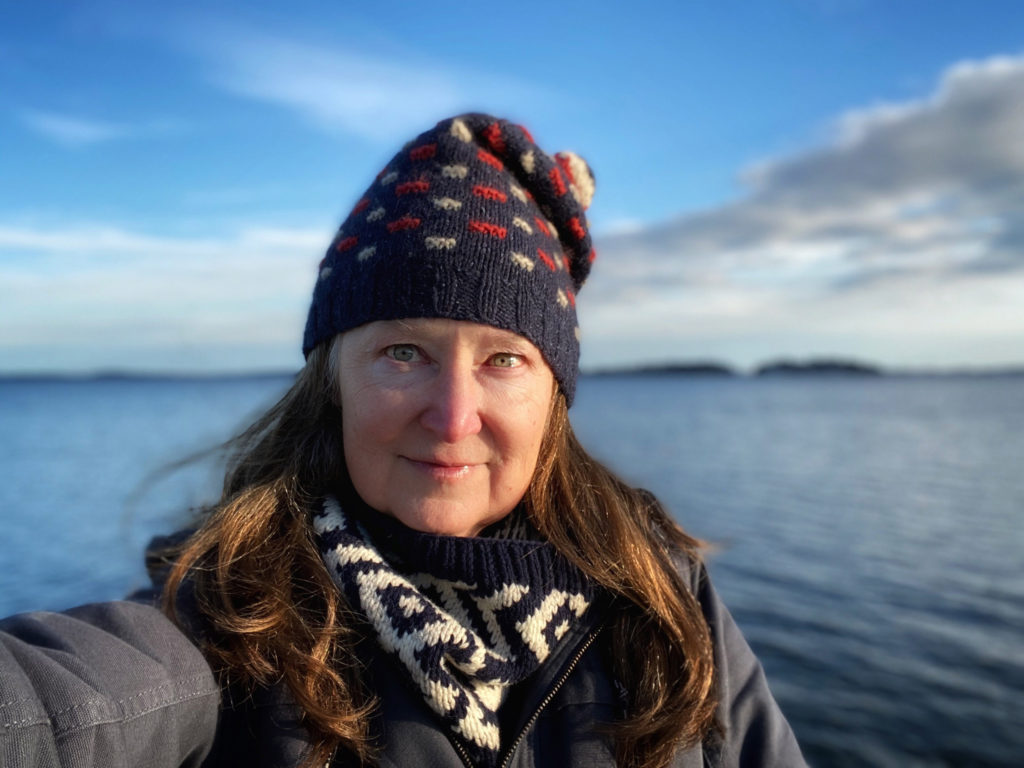
I’ve been wearing my version ever since! Here I’m at the end of the dock in Falmouth Maine, at the town landing.
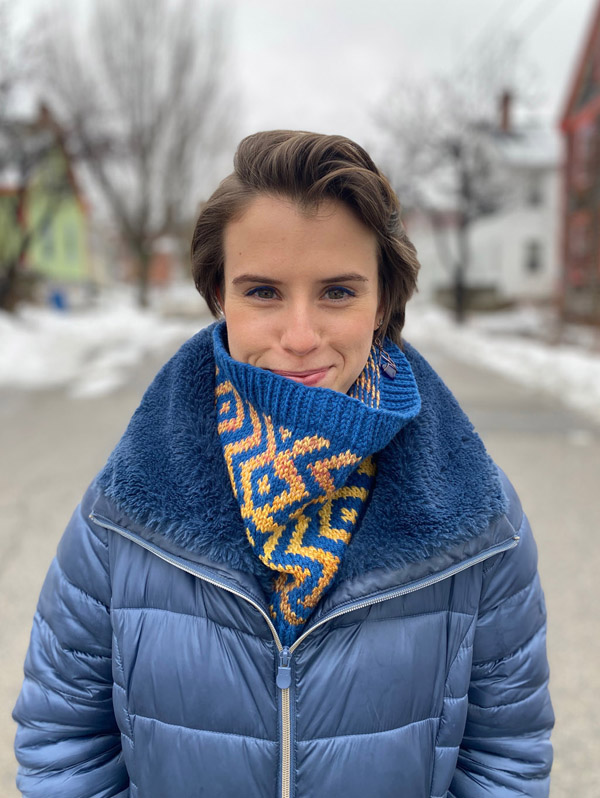
Olivia, my wonderful intern for the last few weeks, willingly took on making a second sample. She choose Lark in River, a medium blue color and a wonderful variegated yellow called Salty Dog, in Dream State, by Spincycle Yarns out of Bellingham, Washington.
We were both delighted with the resulting cowl, the colorplay of the Spincycle yarn is effortlessly beautiful! Olivia herself is extra extra, agreeing with only a tiny hesitation to being my supermodel at the drop of a hat, twice!
I can not thank her enough, she’s the best!
Estimated Worsted Weight Yarn Amounts
- Version 1 MC 165yd [150m], CC1 60yd [55m], CC2 30yd [28m]
- Version 2 MC 165yd [150m], CC 90yd [83m]
20% off with code: 2020
through midnight
Sunday February 21, 2020
My thanks to you!
Further Reading: Diagonal Knitting: A Different Slant, by Katharine Cobey
I LOVE seeing your MJM WIPs and FOs! Please tag me so I don’t miss them! @mjmucklestone #maryjanemucklestone


